
Mother of the Golden Spike
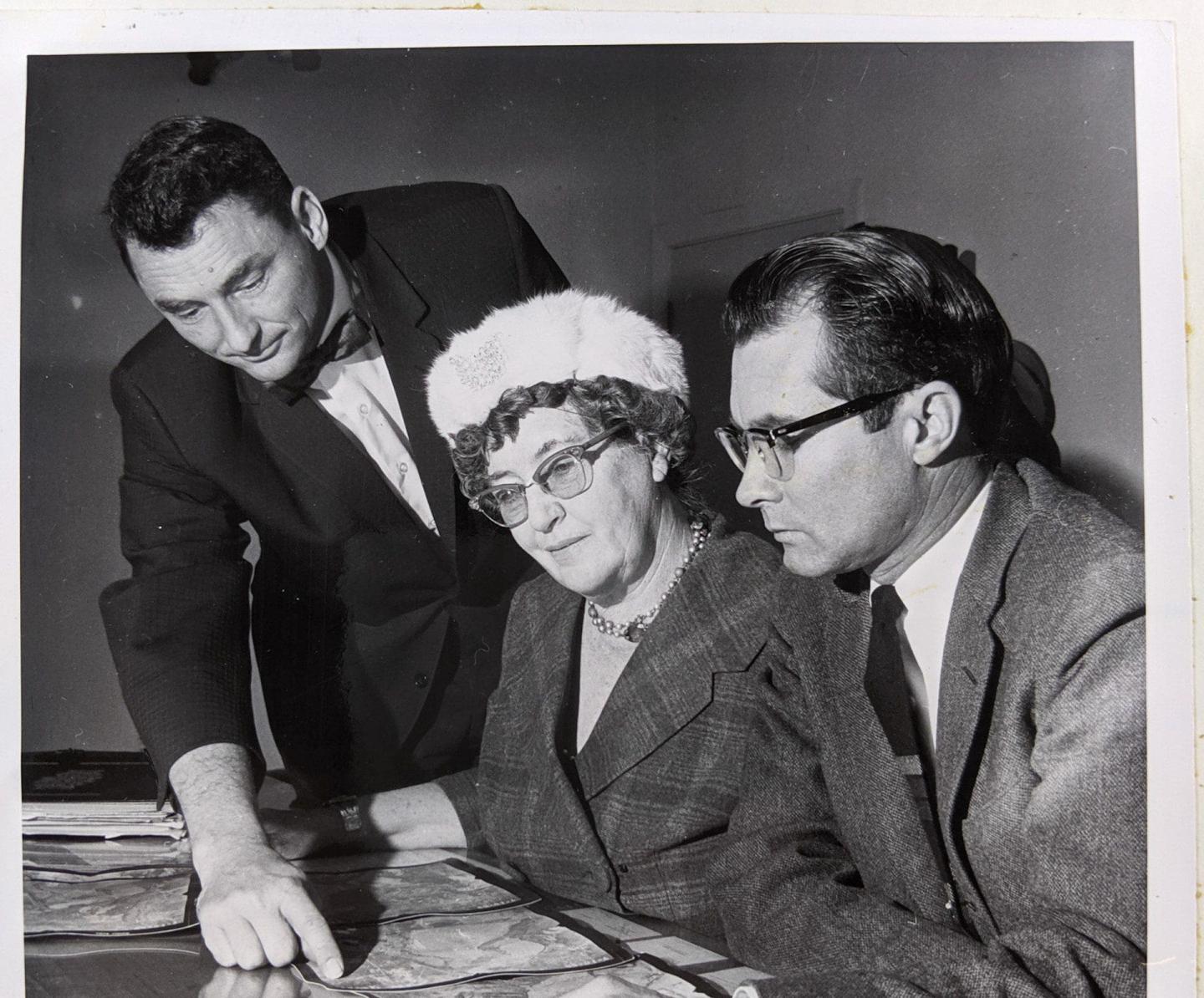
The nation’s first transcontinental railroad is a story of railroad magnates, a president with ambition, endless plains, two mountain ranges, thousands of men laboring far from home, picks, shovels, axes, explosives, and a woman who sought recognition for this effort long after the last rail had been laid. Of the 424 sites that comprise the National Park System, each of them has a champion. Someone who saw the valuable resource and campaigned to protect it by the National Park Service (NPS). Golden Spike National Historical Park owes its existence to the tenacious efforts put forth by Bernice Gibbs Anderson, a woman who led a five-decade campaign that was once described by former NPS Chief Historian Robert M. Utley as “A splendid lesson in elementary civics.”
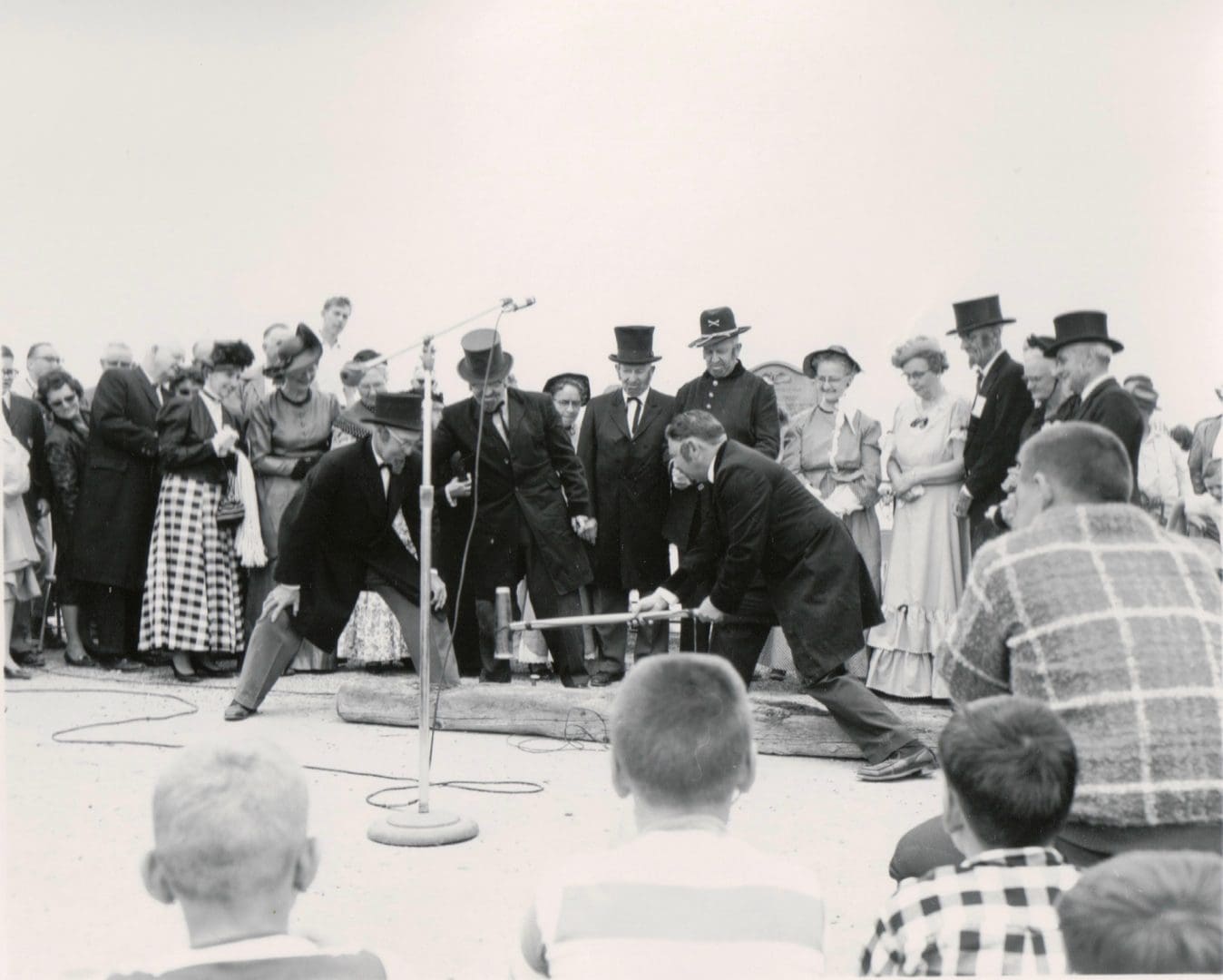
The remote site of Promontory, Utah, once held the nation’s undivided attention as a solid gold spike was used to complete the nation’s first transcontinental railroad ceremoniously. Coast-to-coast travel went from an arduous journey measured in months to a weeklong trip over iron rails. The raw riches of the American West could now be quickly transported to the industrialized east. Military units could rapidly deploy from eastern garrisons, thus changing the military mobility of the United States and forever changing the lives of Native Americans in the west. The nation truly changed at Promontory, but after the fanfare associated with the railroad’s completion on May 10, 1869, the area slowly settled into a quiet little whistle-stop. A new shorter line completed in 1904 bypassed Promontory, drastically reducing the number of locomotive whistles heard in the valley, and a nationwide call for all surplus rail to be pulled up for the war effort in 1942 left Promontory as a true ghost town.

In 1905, a five-year-old Bernice Gibbs was introduced to her grandparent’s cattle operation that used the Promontory area for summer grazing. Riding out to Promontory with her grandmother, Bernice became enthralled with the stories that came from not only her grandmother but the cowboys that worked in the area. The stories included the golden spike, steam locomotives, and a crowd of 1,000 people that anxiously watched the ceremony in 1869. Growing up in the nearby town of Corinne, Utah, Bernice started to see the significance of how the nation, and perhaps the world, had changed in her backyard.
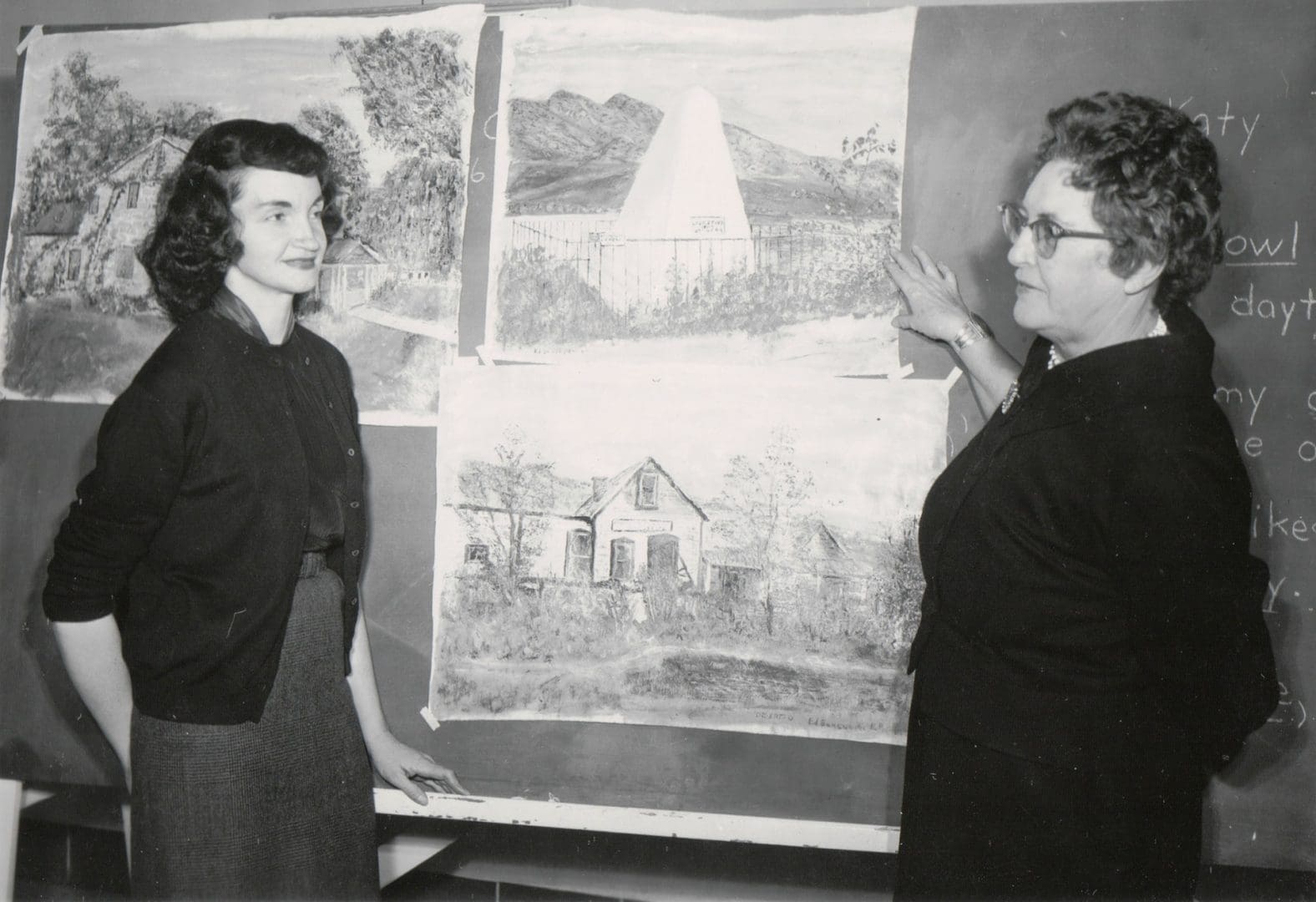
Bernice started a career in journalism in the 1920s following her marriage in 1918. She originally wrote for Box Elder News-Journal, and her articles were frequently picked up and reprinted in the Salt Lake Tribune. Her favorite topic was the need for Promontory to be designated as a National Monument. By the early 1950s, she had founded the Golden Spike Association and joined the Box Elder County Chamber of Commerce. She was joined by her good friend Delone Glover who would go on to be president of the Golden Spike Association for 25 years following Bernice’s retirement.

Annual celebrations and reenactments of the 1869 ceremony at the site commenced on May 10, 1952. Bernice remarked, “It is the most neglected historical spot in our land. Some of the visitors I have directed to Promontory Summit to see the site have been greatly disappointed that the spot is not taken care of. In Northern Utah, a little valley sleeps quietly in the sun on top of a low mountain range. In its center, a lonely cement pyramid marks one of the most famous spots in America, the site of the Driving of the Golden Spike signifying the completion of the first transcontinental railroad on May 10, 1869.”
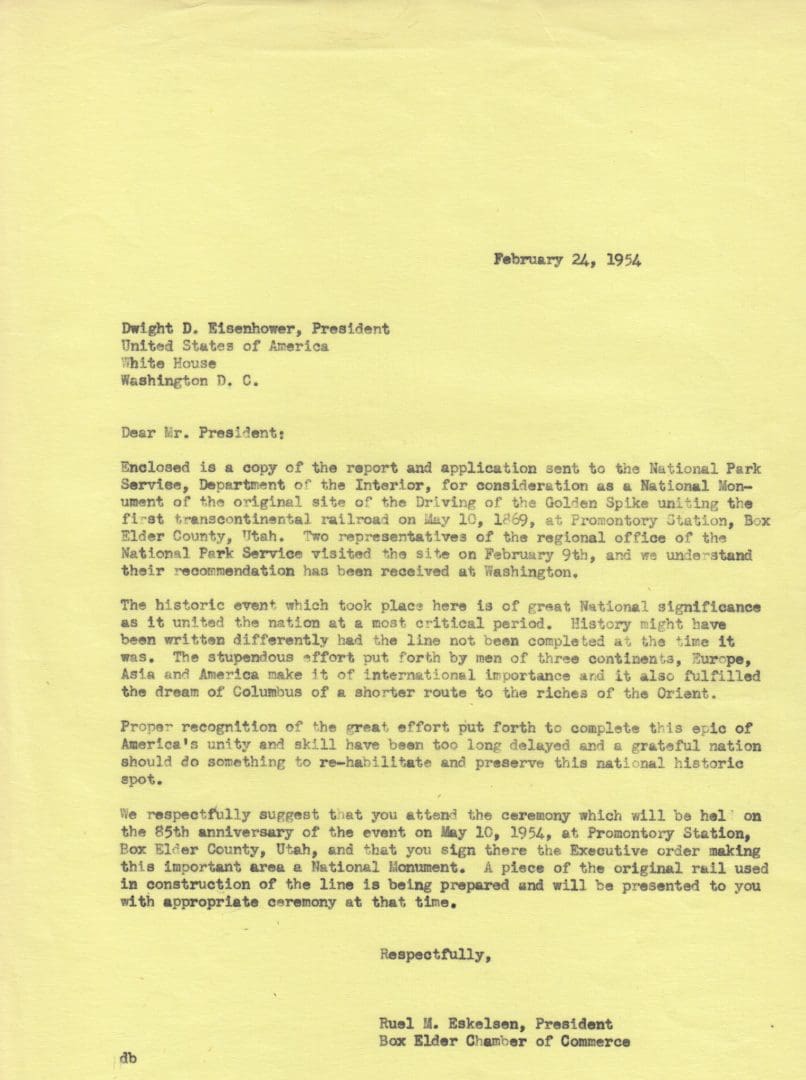
In addition to her local efforts, Bernice also penned letters to congressmen, representatives, the NPS, and even President Dwight D. Eisenhower asking for the site to be recognized. In January of 1960, NPS Chief Historian Robert M. Utley picked up Bernice in a rented government truck and drove out to the site during a blizzard to get a firsthand account of the condition of the site. They looked over the abandoned railroad grade and the surviving 1869 work. Having conducted a successful survey, they started the return journey to Corinne only to get stuck in the snow. Faced with poor traction, Robert asked Bernice to climb into the back of the pickup truck and position herself over the rear axle to gain the needed traction to free the vehicle. Bernice, who had penned hundreds of articles, written numerous letters, and founded a historical association, was now asked to help the park service with a stuck truck.
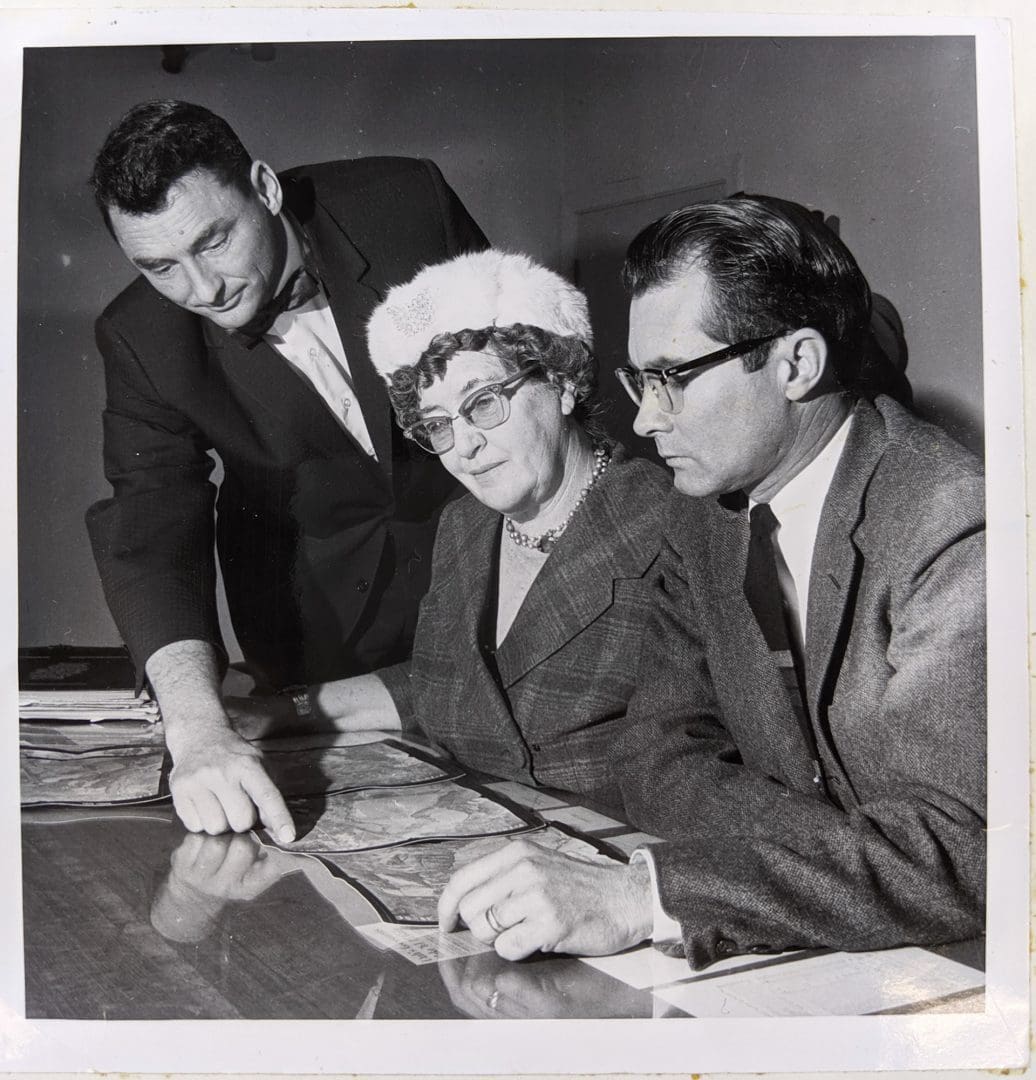
Thankfully, these efforts (which included the snow-bound truck incident) added Golden Spike National Historic Site to the National Park System in 1965. The visitor center was built shortly after that for the centennial in 1969, which saw an attendance of 28,500 people. In 2019, the site was redesignated as a National Historical Park, with over 50,000 people attending the sesquicentennial celebration during a three-day event. The site, the park, and what visitors currently experience all go back to a five-year-old girl visiting the spot that changed the nation with her grandma.
By: Park Ranger Lucas Hugie, Golden Spike National Historical Park



